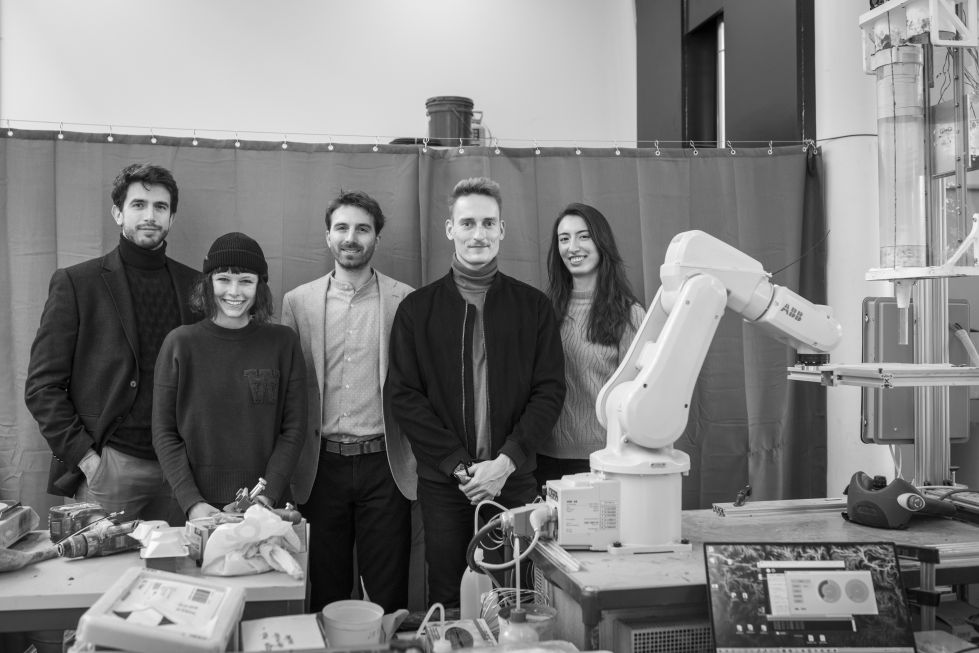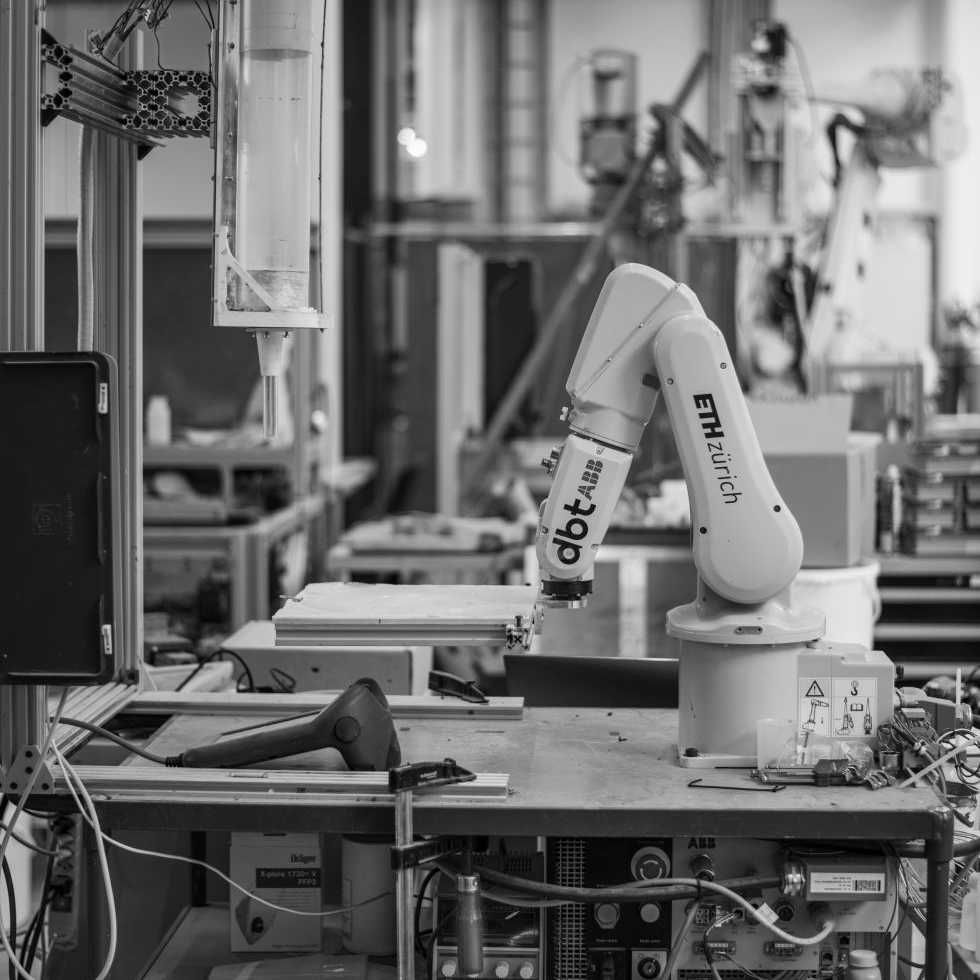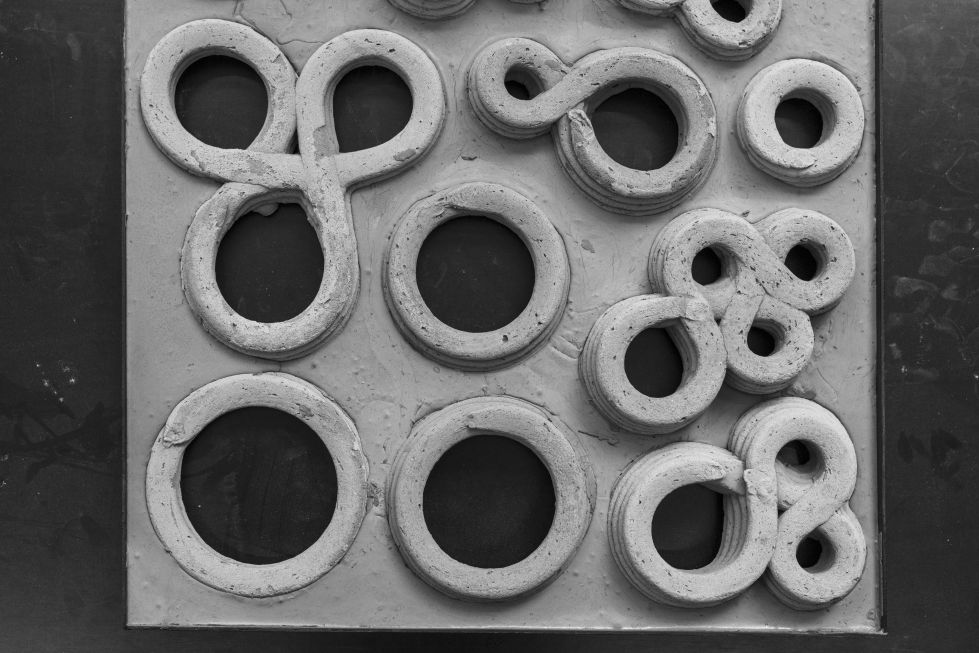additivETH success stories
Additive Manufacturing in Architecture?
The terms “additive manufacturing” (AM) and “3D printing” are usually used synonymously. In the field of building and construction, this terminology appears to be of little use at a first glance: Although there are occasional components created by machining, the joining of material generally plays a much more significant role. Therefore, in the interest of better understanding, in this case we will refer to “3D printing” here and avoid the terminus AM.
The attempt of a definition:
So what characterizes 3D printing in architecture? A concise yet binding definition seems difficult, but there are two important key criteria: The first concerns the amorphous raw materials as opposed to the already established construction method with prefabricated molded parts. The second criterion is the use of automated manufacturing solutions, e.g. with the help of industrial robots. What is not defined, on the other hand, is whether 3D printing in architecture has to take place “on site” (as in the case of whole houses printed in one piece). Both approaches offer high potential, as the degree of digitization in the construction industry is still comparatively low compared to other sectors.
New materials for new methods
The adoption of such techniques creates a whole new level of design freedom, giving architects new scope for creativity. It is also assumed that in the future, the use of 3D printing in architecture will enable significant time and cost reductions. One of the decisive factors here are the significant material savings, because 3D printing allows the material to be used in a very finely targeted manner where it is needed. In order to exploit these advantages in the real world, however, new processes and materials are need. Such are currently being developed in a project, founded by Innosuisse and led by Anna Szabó and Patrick Bedarf at the Chair of Digital Building Technologies (DBT) at ETH Zurich together with the official ETH spin-off external page FenX (originating from the Complex Materials group).
Mineral foam 3D printing
Their common goal is to unlock the potential of mineral foams for 3D printing in architecture. Due to its characteristics, mineral foam is ideal for use in construction: Although it is very light and offers excellent insulation, it is not flammable. One of its main advantages, however, lies in its eco-balance: not only is it fully recyclable, but it is itself mineral waste based. This innovative building material has been developed by FenX for the last two years.
Interdisciplinary cooperation as key
That this collaboration came about is due in part to an event organized by the Competence Center for Materials and Processes, at which Patrick Bedarf of the DBT and his current partners of FenX were able to get to know each other. Since 3D printing with mineral foams presents challenges both at microscopic level and at the scale of architectural components, the material science competence of FenX and the expertise of DBT in digital fabrication had to be combined for the technology development.
Framework for machine control
In this sector, there is already a very broad experience at ETH which manifests, for example, in the so-called external page COMPAS Framework. This library was developed the Institute of Technology in Architecture (ITA) with core framework developed by the Block research group (BRG). It is written in Python and includes a large number of packages that allow, among other things, the so-called “slicing” of geometries for 3D printing, but also the direct control of industrial robots. This already provides a very good starting point for controlling robots for the extrusion of mineral foam.
Complex geometries in an efficient way
The researchers’ goal for the future is to produce complex geometries through automated extrusion of the material by industrial robots in an efficient manner. These could be used, for example, as highly detailed and individual facade elements. Due to the excellent thermal insulation of mineral foam, they can also be applied as tailor-made insulation panels.
Stay-in-place functional formwork
Particularly appealing, though, appears to be the application of 3D-printed formwork made from mineral foam for the casting of concrete. This approach, known as stay-in-place functional formwork, has been applied to construction projects in the past and allows the rapid and cost-effective production of large structures with a high degree of freedom of design. This enables architects to reinvent the aesthetics of a material because they design not only the building element but also how it is build up in detail by means of print paths. This can be used, for example, to specifically enclose void spaces in order to integrate functions or achieve lighter structures and save raw material.
Facade panel as a proof of concept
In order to prove these advantages of 3D printing with mineral foam and to gain practical experience with it, the facade element “Porous Loops” was developed during a master thesis that was guided by DBT. Such proof of concepts are enormously important to bridge the step from laboratory scale to “real life scenarios” on construction sites. For the first time, this project showed how mineral foam 3D-Printing can be used for an architectural scale object that leverages the advantages of the formwork-free automated fabrication method for bespoke freeform geometries.
Contact
ETH Zurich, )
ETH spinoff )
additivETH success stories
3D-Printing (also known as Additive Manufacturing or short AM) is considered a disruptive technology that affects manufacturing, products, and value chains.
Researchers of ETH drive these transformations by developing innovative materials, processes and use cases for AM.
With the initiative «additivETH success stories», the Competence Center for Materials and Processes features research projects highlighting the potential but also upcoming challenges of AM implementation.
Questions?
For further information, for instance, about AM activities at ETH Zurich or to join the ETH AM Community and related mailing list, please send us an


